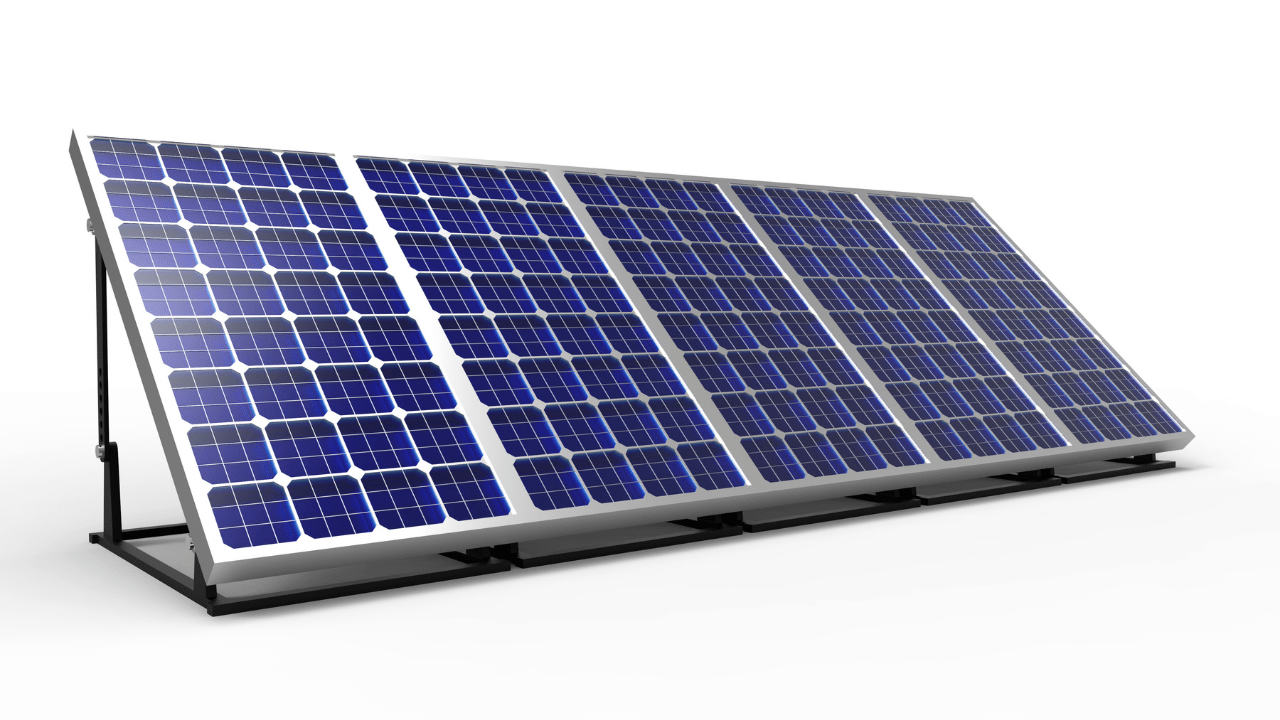Top 3 Solar Structures: Harnessing the power of the sun is a dream for many homeowners. Not only does solar energy reduce your reliance on the grid and potentially lower your electricity bills, but it’s also a clean and sustainable way to power your home. If you’re considering making the switch to solar, your roof is a prime location for a solar panel installation. But with different types of solar structures available, choosing the right one can be overwhelming.
Understanding Solar Panel Mounting Systems
Before diving into specific structures, let’s establish a common ground. Solar panels require a mounting system to be securely attached to your roof. These systems are crucial for ensuring optimal panel performance, longevity, and withstanding weather elements. Here’s a quick breakdown of the two main mounting types:
- Roof-penetrating mounts: These mounts are anchored directly into your roof rafters, providing a very secure installation. However, they require drilling holes in your roof, which can potentially void your roof warranty and introduce minor leak risks if not installed correctly.
- Non-penetrating mounts: These mounts are designed to attach to your roof without penetrating the surface. They are ideal for homes with newer roofs or those where maintaining a watertight seal is a top priority. While generally less secure than penetrating mounts, advancements in technology have made non-penetrating systems highly reliable.
Important Note: Regardless of the mounting system type, it’s crucial to consult with a qualified solar installer to ensure compatibility with your specific roof type, structure, and local building codes.
Top 3 Solar Structures
Now that we understand mounting basics, let’s explore the top 3 solar roof structures:
1. Roof-Mounted Systems (Most Common)
- Description: Roof-mounted systems are the most common type of solar structure. They consist of a metal framework attached directly to your roof using either penetrating or non-penetrating mounts. The framework then supports the solar panels at an optimal angle to maximize sunlight capture.
- Benefits:
- Most cost-effective: Roof-mounted systems are generally the most affordable option due to their simplicity and widespread use.
- Highly versatile: They can be customized to fit various roof shapes, sizes, and pitches.
- Secure: Penetrating mounts offer excellent wind resistance, making them suitable for most weather conditions.
- Drawbacks:
- Penetrating mounts: Can potentially void your roof warranty and introduce minor leak risks if not installed correctly.
- Less visually appealing: May be more noticeable on your roof compared to other integrated options.
- Key Considerations:
- Roof type and condition: Ensure your roof is structurally sound and compatible with the weight and potential wind load of the solar panels and mounting system.
- Sun exposure: Analyze your roof’s sun exposure patterns to determine the optimal placement and tilt angle for the panels.
- Local building codes: Ensure the chosen mounting system complies with your area’s building code requirements.
2. BIPV (Building-integrated Photovoltaics) Systems
- Description: BIPV systems seamlessly integrate solar panels into your roof’s design. They can replace traditional roofing materials like tiles or shingles, offering a sleek and aesthetically pleasing look. BIPV systems typically utilize non-penetrating mounts.
- Benefits:
- Aesthetics: Provide a clean, integrated look that blends solar functionality with your roof’s design.
- Durability: Many BIPV systems offer superior weather resistance compared to traditional roofing materials.
- Potential tax benefits: In some regions, BIPV systems may qualify for additional tax credits or incentives.
- Drawbacks:
- Higher cost: BIPV systems are generally more expensive than traditional roof-mounted systems due to the advanced materials and installation process.
- Limited options: Currently, BIPV options might be limited in terms of aesthetics and efficiency compared to traditional solar panels.
- Key Considerations:
- Roof compatibility: Not all roof types are suitable for BIPV systems. Consult a qualified solar installer to assess compatibility.
- Initial investment: Be prepared for a higher upfront cost compared to traditional roof-mounted systems.
- Aesthetics: Choose a BIPV system that complements your home’s overall design.
Solar Carports
- Description (cont.): The carport structure supports the solar panels, creating a shaded area beneath for your car. Solar carports typically utilize non-penetrating mounts attached to the carport frame.
- Benefits:
- Dual functionality: Provides covered parking and generates clean energy, maximizing your use of space.
- Vehicle protection: Shields your car from sun damage, hail, and other weather elements.
- Potential EV charging: Carports can be pre-wired to integrate electric vehicle (EV) charging stations, future-proofing your home.
- Drawbacks:
- Highest cost: Solar carports require additional structure construction, making them the most expensive option on this list.
- Space requirements: They necessitate sufficient space on your property to accommodate the carport structure.
- Permitting: May require additional permits compared to traditional roof-mounted systems.
- Key Considerations:
- Property size: Ensure you have adequate space to accommodate the carport structure without obstructing walkways or driveways.
- Local regulations: Research local permitting requirements for carport installations.
- EV charging integration: Consider future-proofing your carport by pre-wiring for EV charging stations if you plan to own an electric vehicle.
Choosing the Right Solar Roof Structure: A Comparison Table
To help you visualize the key differences between these structures, here’s a comparison table:
| Feature | Roof-Mounted System | BIPV System | Solar Carport |
|---|---|---|---|
| Description | Panels attached to roof with mounts | Panels integrated into roof design | Standalone structure with panels on top |
| Mounting type | Penetrating or non-penetrating | Primarily non-penetrating | Non-penetrating |
| Cost | Most affordable | Most expensive | Expensive |
| Versatility | Highly versatile | Limited by roof type | Not applicable |
| Aesthetics | Less visually appealing | Most aesthetically pleasing | Modern design statement |
| Durability | Standard | Potentially more durable than traditional roof | Standard |
| Space requirements | Utilizes existing roof space | Utilizes existing roof space | Requires additional space |
| Roof compatibility | Wide range of compatibility | Limited compatibility | Not applicable |
| Potential benefits | Cost-effective, versatile | Aesthetics, durability, tax incentives | Dual functionality, EV charging, vehicle protection |
Additional Considerations for Choosing a Solar Roof Structure
Beyond the structure itself, here are some additional factors to consider when making your decision:
- Your budget: Solar panel systems are an investment, so determine your budget and choose an option that fits comfortably within your financial plan.
- Your roof’s condition: The age, material, and overall health of your roof will play a role in determining which structure is most suitable.
- Sun exposure: Analyze your roof’s sun exposure patterns to optimize panel placement and tilt angle for maximum energy production.
- Local incentives: Research any available rebates, tax credits, or financing programs offered in your area to potentially offset the cost of your solar installation.
Conclusion
Transforming your roof into a solar energy powerhouse is an exciting step towards energy independence and a sustainable future. By understanding the different top 3 solar roof structures, their pros and cons, and the additional factors at play, you can make an informed decision and select the option that best suits your needs and budget. Remember to consult with qualified solar installers who can assess your specific situation and recommend the most suitable solar solution for your roof. They can also provide detailed information on system design, financing options, and the overall return on investment (ROI) you can expect from your solar power system.

